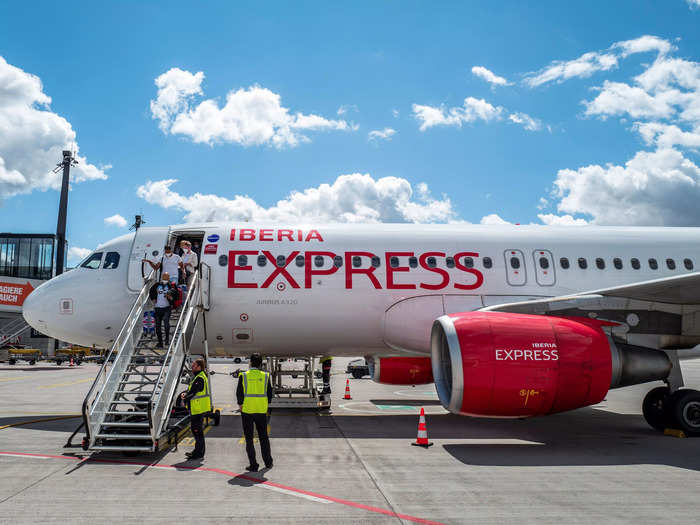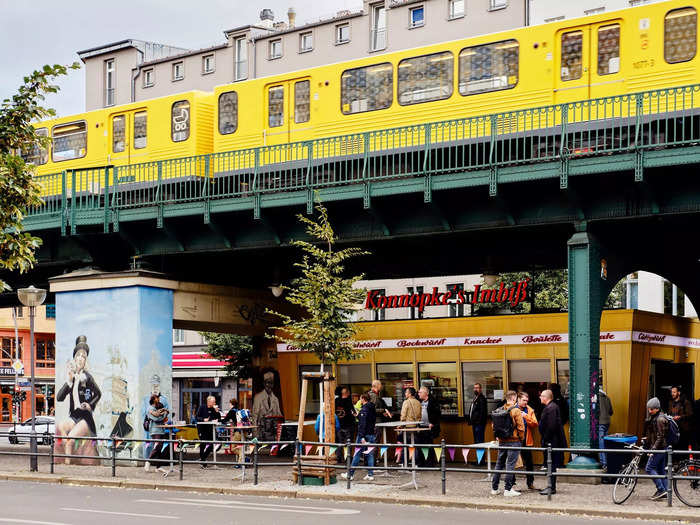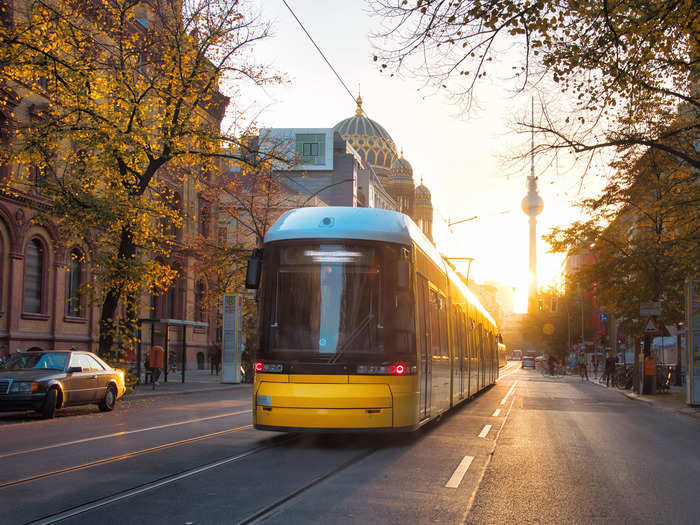Berlin's public transportation system can be complex, but it's one of the most efficient and affordable ways to get around the city.Verena Brüning for Insider
- Berlin is Germany's capital and largest city, with over 3.5 million people in around 344 square miles.
- Its public-transportation network is expansive and efficient, but can be tricky to navigate.
I lived in Berlin for two years and return frequently to take advantage of all its cultural offerings. And while it's well-serviced by efficient public transportation, the sheer size of the city, at 344 square miles, means that getting around can be quite time-consuming.
It can also be daunting given the vast transportation network and different transport options that include regional trains (S-Bahn), subways (U-Bahn), trams, and buses. One tip to remember is that trams only run in the former East Berlin, while in West Berlin, it's buses.
I've found that Google Maps and the city's BVG (Berliner Verkehrsbetriebe) public transport website or app (both available in English) offer the most clear, up-to-date transit information and show the fastest, easiest connection between stops. Depending where you're going, you may need to make connections between several different forms of transit.
After reading the above, you might be tempted to rent a car, but keep in mind that you'll have to pay for parking, whether at a street meter (which costs around 2 to 3 euros per hour) or a garage (25 to 30 euros a day). Taxis can be quite pricey (with a base rate of 3.90 euros, and 1.65 to 2.30 euros per kilometer, depending on the distance), and Uber is similarly priced.
Here's some need-to-know transportation information along with the best options for getting to and around Germany's capital.
Flying into Berlin
Brandenburg Airport, or BER, is Berlin's only airport. John MACDOUGALL / AFP
Berlin's only airport is the Berlin Brandenburg Airport, located about 16 miles south of the city center in Schönefeld. More than 75 airlines operate out of BER from across Europe and the Mediterranean, and offer direct international flights from New York, Washington DC, and Singapore, among others. There are two terminals: Terminal 1 is the arrival point for all international flights and most domestic flights, and Terminal 2 currently services only Ryanair.
Getting to the city center
Travelers flying into BER can take the S-Bahn, Airport Express, or Regional Express trains into the capital. Verena Brüning for Insider
There are several transportation options from the airport to the city center. I've tried them all, and outlined the pros and cons below, along with tips on how to use them.
Taxis and ride-hailing
Designated taxi stands are located in front of Terminal 1. There's no set rate from the airport to the city, and be aware that taxis in Berlin are quite expensive. Uber is also available from designated ride-hailing zones and costs about the same as a taxi. On average, your ride to the city will cost 50 euros.
Trains
I almost always use public transport to travel to and from the airport. The airport is well-connected to the city by Regional-Express (RE), Airport Express (FEX), and rapid-city (S-Bahn) trains, all operated by Deutsche Bahn, or DB.
All trains arrive and depart from the airport railway station (Flughafen BER), located directly beneath Terminal 1, on level U2. The Airport Express runs several times an hour, stopping at Berlin Ostkreuz, Gesundbrunnen, and ending at Berlin Central Station (Berlin Hauptbahnhof). Regional trains (RE7, RB14, RB22) also run regularly between the airport and various points in the city center. Two S-Bahn lines (S45 and S9) run about every 20 minutes, passing through major hubs in the city.
On average, it takes about 25 minutes to get from the airport to Alexanderplatz and about 30 minutes to Berlin Hauptbahnhof.
Getting around the city
Berlin's transportation system operates on an honor system. Verena Brüning for Insider
As Berlin is so spread out, you'll definitely need to use public transport to move around the city. Berlin's extensive public-transport network is made up of DB's regional and S-Bahn trains, together with the city's BVG network of underground U-Bahn trains, trams, and buses.
The transit system in Berlin has three zones — A, B, and C — with the majority of attractions located in the A zone, such as the Brandenburg Gate, Museum Island, and Charlottenburg Palace. Within these zones, tickets purchased via BVG are valid for all forms of public transport. You can buy tickets from automated kiosks at any S-Bahn or U-Bahn station, at ticket machines on the tram (coins only), from the driver on a bus, or via the BVG app.
Determining which ticket you need can be confusing, so I'll break it down: For those within the city limits (Zone AB), there are single tickets (3 euros), valid for 120 minutes in one direction (so no round trips); short-trip tickets (2 euros), valid for short distances; and 24-hour unlimited tickets (8.80 euros).
There are also four-trip single tickets (9.40 euros), which will save you a few euros versus purchasing individually. In my opinion, unless you're doing very few trips (I find I usually take four trips per day), the 24-hour ticket is the best option in terms of ease and cost.
When first arriving, though, it's extremely important to remember that the airport is located in zone C (Berlin city limits is in the AB zone). You will need to purchase an ABC ticket for your journey (3.80 euros), available through the automatic vending machines or at the sales points at the station.
How Germany's honor system for public transit works
Passengers can be fined 60 euros if they're caught riding public transit without a validated ticket. golero/Getty Images
With paper tickets, you'll validate them on the station platform or when boarding a bus or tram using the ticket-stamping machine. If you have cell service, it's extremely easy to buy and validate your ticket using the BVG app (available in English).
Always remember to validate your ticket before boarding — if you're caught not doing so or without the correct ticket, you could be pulled off the train by a ticket controller and fined 60 euros on the spot.
This is because in Berlin, and throughout Germany, public transport runs on an honor system, meaning there are no turnstiles for subways or regional trains — but spot checks by controllers who will ask to see your validated ticket are frequent. It happened to me once when forgetting to buy a zone C ticket on the way to the airport, and not only is it embarrassing, it's also a very costly mistake.
Service hours and frequency of public transit vary depending on the day of the week and the type of transport — I recommend using Google Maps or the BVG website to plan your route.
Currently, a medical (FFP2 or KN95/N95) face mask is still required on all forms of public transport. But don't be surprised to see many people not wearing them, as I noticed on a recent visit.
View Insider's comprehensive guide to visiting Berlin.




